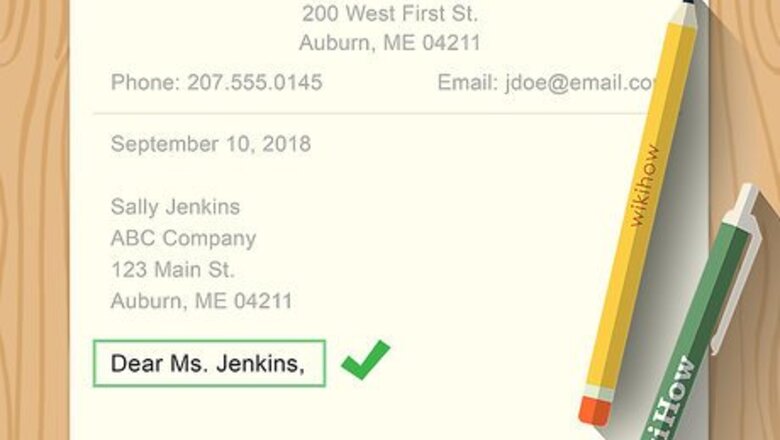
views
Writing the Opening
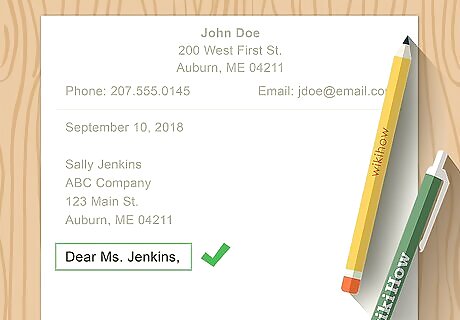
Address your letter to a specific person, if possible. Introductory letters should be addressed to the person who will be reading it, whenever possible. If you're submitting to a general account or hiring company and you're not sure, addressing a letter "All concerned" or addressing a letter to the hiring manager or the titled position is also appropriate. Begin your letter by stating your position, title, or role and explaining why you're writing. You don't usually have to include your name in the letter, because your name will be included in your signature.
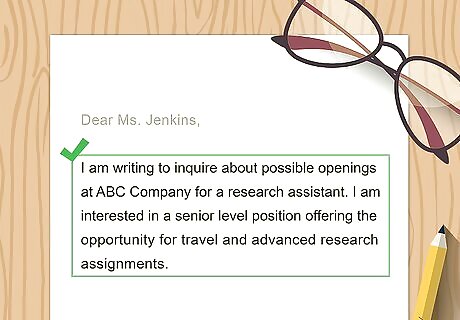
State your purpose clearly. As early as possible in a letter of introduction, you need to express your reason for writing. What do you want? Why are you writing? If these questions even occur to an employer or company, your letter is more likely to end up in the trash than to end up getting you an interview. Cut to the chase: "I am writing today to inquire about openings for a new comptroller" or "I am writing to outline the features of a new product recently unveiled by my company" are perfectly effective statements of purpose, which should be one of the earliest sentences in the letter.
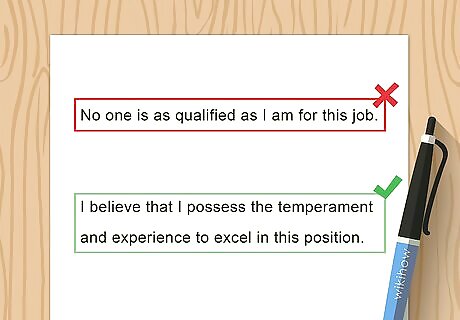
Establish an appropriate tone or style for the letter. When writing an introductory letter, it's good to have a consistent, competent style that doesn't stray too far toward familiarity or end up sounding too stiff or technical. For a letter of introduction, your tone should be professional, but not cold or robotic. It's important to have some element of human warmth in the letter, while keeping the overall content professional. One common mistake that inexperienced writers make is in avoiding contractions at all cost, to such a degree the letter ends up sounding like it was translated, rather than written. Use contractions, letting the letter sound conversational, but also professional. Let the letter represent you. Don't try to sound smart by substituting thesaurus words for words you would normally use. This isn't a master's thesis, this is an intro letter. Use the appropriate words and be concise.
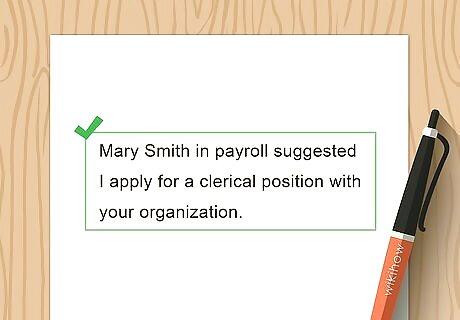
Establish a personal connection. Explain how you came to learn about the position, the opportunity, or the company to which you're writing, and outline your connection to it. Upon reading an introduction letter, the employer or hiring coordinator should have a clear sense of who you are, why you want the job, and whether or not you'd be a good fit for the position. If this connection is powerful enough, you'll end up with an interview and give yourself the chance to get the job. If you have any connection to anyone who works at the company, or if you've been referred to apply, or if you know someone who's previously been awarded a grant from your institution for their work, it's good to make a note of that early in the introduction. This can be a way of jogging someone's memory ("Oh, this is who Jim told me about!"), or establish it for the first time.
Writing the Body of the Letter
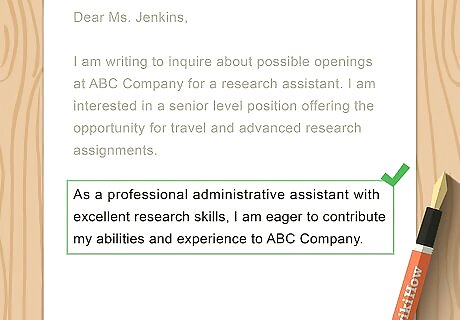
Connect your qualifications with the position. If you're trying to explain your qualifications, competence, and your ability to take on jobs or projects, it's important to make those connections clear in a few sentences and explain the ways in which your experience doing other things connects to your ability to do this thing, whether it be a new position, or a transfer, or an entirely new job. Outline some of the experience that you have in the field or industry you reference in the letter. If you have targeted the introductory letter as mentioned, it will be focused on some kind of professional field or industry. It's helpful to include specific skills and experience in order to make the letter effective. Wanting a job is not the same thing as qualifying for it. If you outline in the introduction that you're interested in interviewing for the job because you'd made an excellent fit, you don't need to repeat yourself fifty times throughout. Writing that you "really really need this job" doesn't make you seem like a more attractive candidate.

Be as specific as possible. Set up a time that you can meet in person, or express what exactly you would like to happen next in response to your letter. If you want to discuss your qualifications further with an interview, say so. If you want the job outright, say so. Learn everything you can about the hiring process, or the application process to which you're writing, then ask for the next step in the process. Focus the introductory letter toward a specific job level. This job type or position doesn't have to be explicitly mentioned, but keep in mind what kind of result you are going after in order to keep the letter relevant.
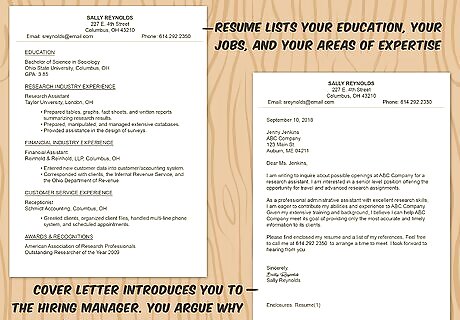
Don't include information included on your resume. Listing out your degrees, your awards, and name-dropping in an intro letter is a bad idea. Repeating information that can be quickly glanced at on your resume is a waste of space in the letter. You're not trying to write about information that can be gleaned more quickly and easily elsewhere. You're writing to sell yourself and to get your foot in the door.
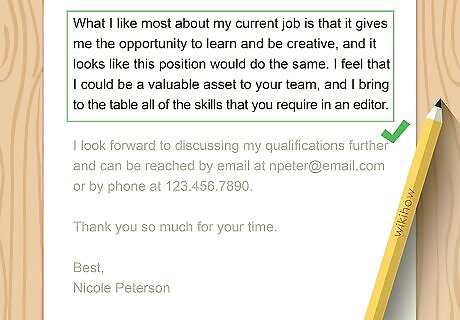
Write to get the interview. It's unlikely that you're ever going to get a job or be awarded anything that you want from the strength of a letter alone. Writing the letter gets you a foot in the door, a chance to prove yourself and your ability to be the person or the employee that the reader of the letter needs. For this reason, it's good to cut to the chase, highlight your qualifications and connections to the position and try to get to the next stage in the process, whether that be an interview or some other hiring step. Reiterate the most important information in the conclusion. Just before you close the letter with an appropriate salutation, it's a good idea to briefly reiterate the thing that you want, directly.
Revising and Polishing the Letter

Revise and proofread your letter. After writing a draft, it's absolutely essential to go back over your letter and clean it up on the sentence level and beyond. All good writers know that a piece of writing doesn't happen until it's revised. Once you've written your letter, you've got the hard part done, but you've still got to save enough time to clean it up and make it good. Revising is more than cleaning up your typos and spelling errors. Give your letter a whole second look and make sure that the subjects and verbs are all in agreement, that your meaning is clear, and that your letter accomplishes what it needs to accomplish. Once you've gotten the writing as successful as possible, it's ok to start proofreading and looking for "late concerns," the last-minute things, including fixing typos, spelling errors, and formatting your letter.
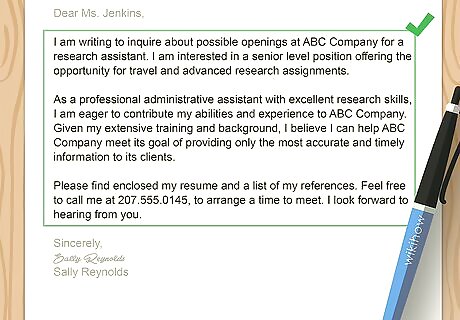
Keep it simple and concise. Introductory letters, in general, should not be longer than the front side of one page, or between 300 and 400 words. Whatever the reason, it's likely that you're writing to someone who's got a lot of paperwork to go through in a given day, and won't want to sift through an especially long, over-written introductory letter. It'd be a shame to end up with all your hard work in the garbage, so it's important to keep it short. Only focus on communicating the most important information in your letter.

Format the letter appropriately. Letters need to be oriented on the page correctly, featuring a distinct introduction, body paragraphs, and a succinct conclusion. If you turn in a single whooshing paragraph with no contact information or salutation, you're not going to get the job, or get an introduction. Include a CV or resume as appropriate, following the introductory letter. The intro should be the first thing in any application packet. Include good contact information. Going through the final edit of the introductory letter, make sure that important contact information is included, generally in the top right-hand corner of the header. Include your email address, phone number, and other basic contact information.

Think about including a postscript. Some business writing teachers and expert communicators recommend adding the most relevant or urgent information in a postscript (P.S.) to the letter. The reason that this often works well has to do with how people process communication in the form of a letter. Rather than putting important information in the conclusion, a postscript or P.S. can be more effective. While this can look informal to some, it might be an effective way to highlight the important information and make your letter stand out.




















Comments
0 comment